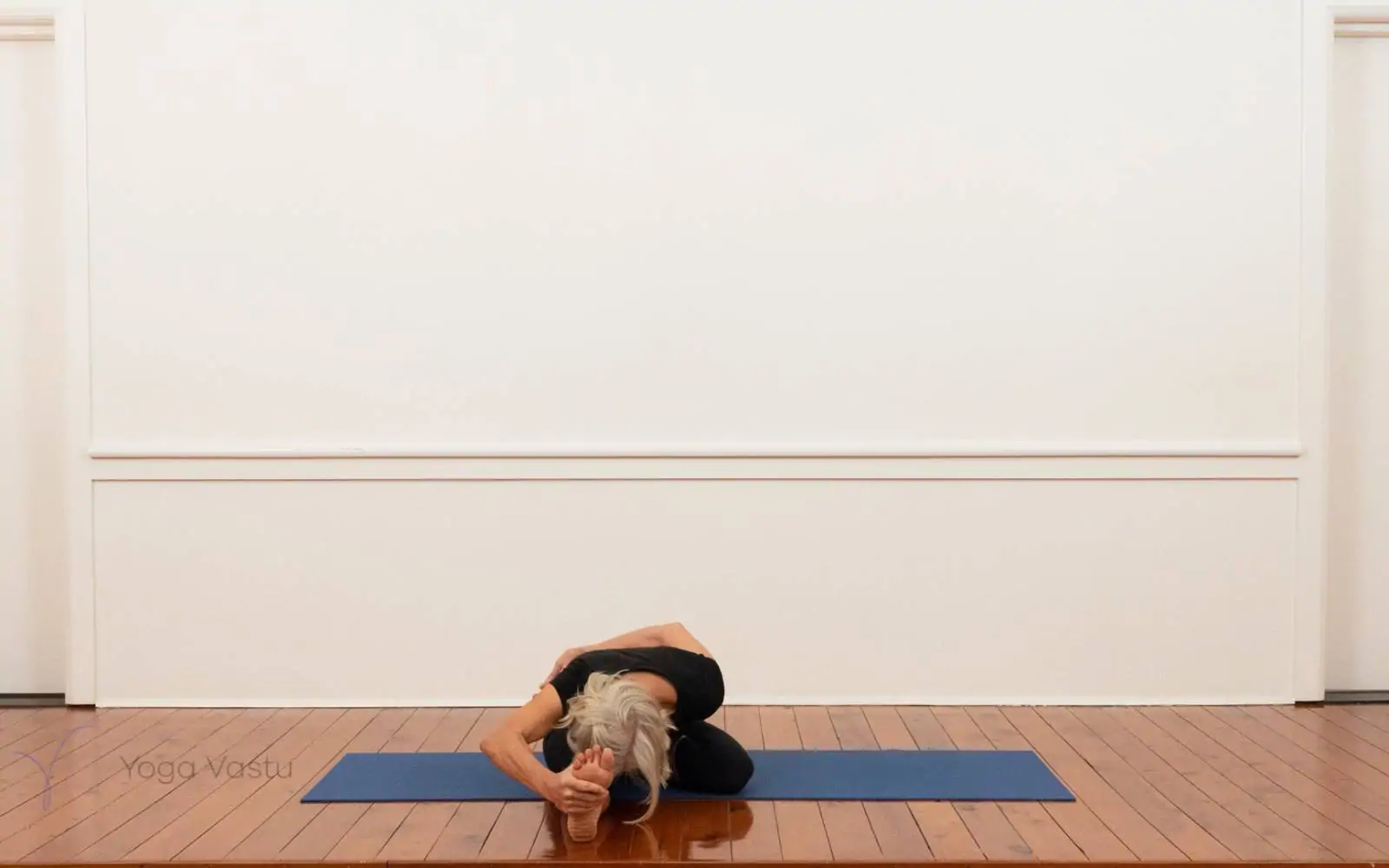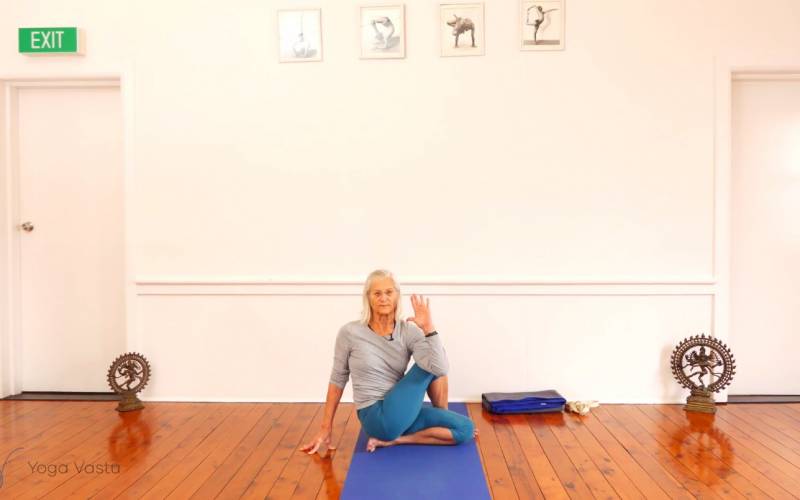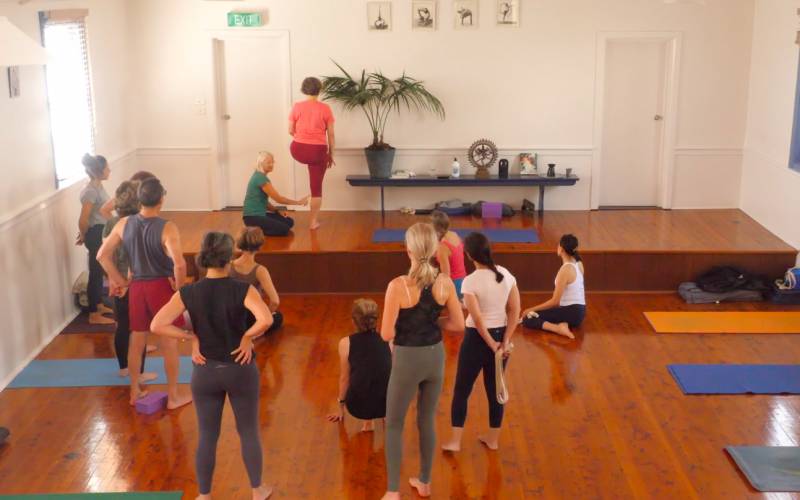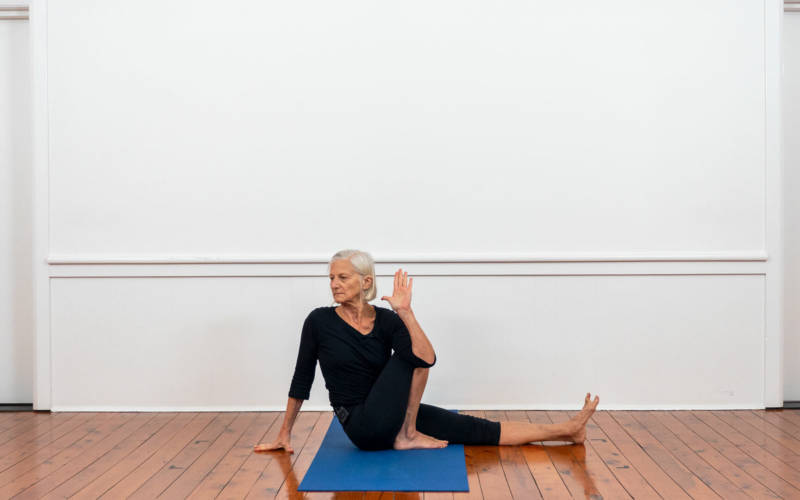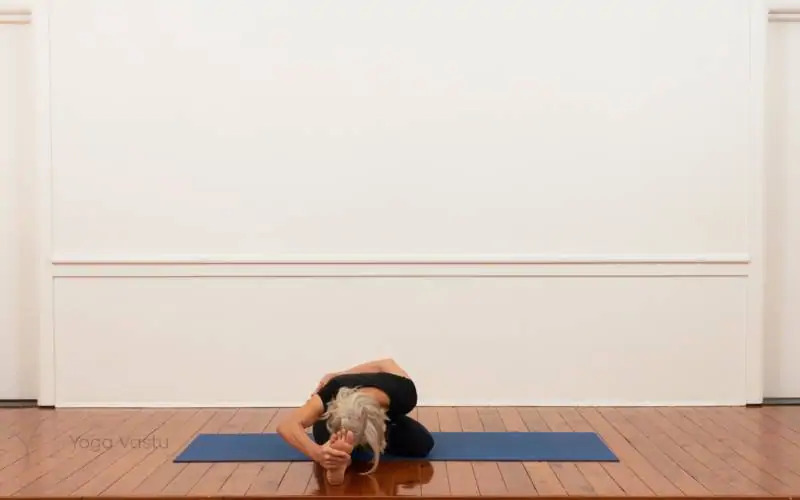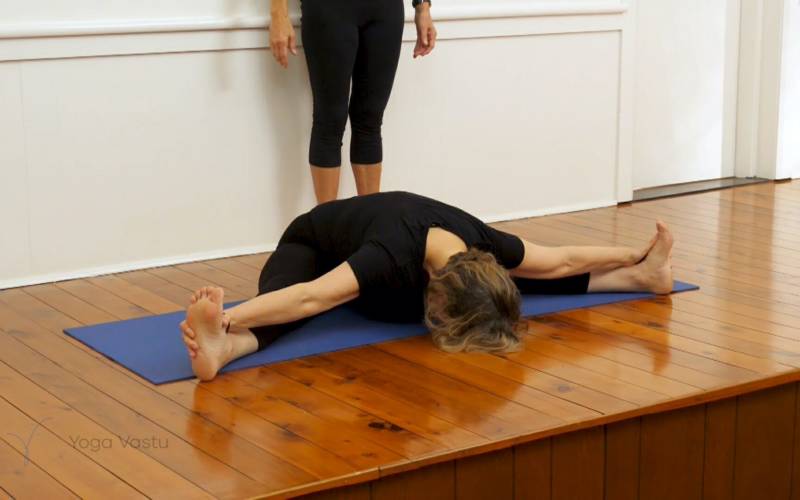How to perform Half Bound Lotus Forward Fold
Start in Dandasana. Bend your left knee and place the foot onto your thigh right thigh-crease. Reach your left hand behind your back to grab hold of your big toe. Pull your abdomen in, reach forward, and grab your right foot with your right hand. Change sides and repeat.
What is Ardha Baddha Padma Paschimottanasana?
This is an asymmetric posture combining elements of Padasana (Lotus Pose), Paschimottanasana, and Gomukhasana. Assuming this position takes a lot of flexibility in the shoulders, hamstrings, knees, and back. For this reason, it should not be attempted unless the practitioner feels comfortable in the aforementioned foundation poses.
The left leg is bent, while the other is extended forward, the heel pressing firmly into the floor, and the toes pointing straight up. The left foot is placed on the right thigh crease, as in Padmasana. The bent knee will typically have the tendency to lift up off the floor. Work on resisting this tendency, push it down to the floor. However, this should not be forced too much as it can lead to injuries. To help prevent the knee from floating, you can either place some folded blankets under your buttocks (to offer a tilt) or beneath the knee (to offer the necessary lift). When this first part has been established, reach your left hand behind your back to grab a hold of your big toe. As you do this, pull your elbow downwards as in Gomukhasana, thus providing your shoulders with a stretch. Finally, pull your abdomen in, extend through the crown of your head and bend forward, reaching your right hand towards your other foot.
When to use Ardha Baddha Padma Paschimottanasana?
Being asymmetric, this pose ideally has to be repeated on both sides. It is also quite advanced, meaning that it is only to be used after all the aforementioned foundation poses have been mastered.
When achieved, it can have a very positive effect on multiple parts of your body. It opens up your hips and improves knee mobility. Furthermore, as you fold over your bent leg, the organs in your abdominal region get massaged gently, making for improved digestive function. This pose is also said to correct posture and so is recommended to people with hunched backs or drooping shoulders.
